Back to Sidestreet Bannerworks
Click here to find out how your engine can be featured!
.


William S. Palmer's K3Q Pacific
by D.Z.
Michigan
Photos by the author
April, 2012
Live steam is often a logical progression from trains. Maybe it's the rarity of seeing these mechanical dinosaurs. Perhaps it's a link with one's formative years, urging the imagination to wonder about how we lived before, that makes steam engines special. In a way, they are bookmarks to a time before I was born; a time that one finds, not only in history books, but also still firsthand in the art of storytelling.
Another enthusiast once told me that live steam was as close as humans have ever been to truly creating a living, breathing being. I believe it. In spite of modern genetic research and manipulation, an in-depth, up close, personal encounter with a full size, live-steam locomotive or other piece of machinery will still give a greater appreciation of this than anything found in a lab.
When I was in my teens, we moved. One of our new neighbors collected many things, including miniature live steam. Years before, my neighbor's family took care of an older gentleman, William S. Palmer, who had never married. He was an excellent machinist and knew about live steam. When Mr. Palmer passed on, the neighbor's family got this gentleman's estate. To make a long story short, one day I asked my neighbor if he ever wanted to sell the NYC live steam locomotive to let me have the first shot at it. Well, several years later, I was fortunate enough to become the new caretaker of this miniature replica.
A little bit is known about Mr. Palmer. He was born in Ipswich, England, in 1890. He was apprenticed as a toolmaker to Ransomes, Simms and Jeffreys in Ipswich. He moved to Toronto around 1910, then to Detroit around 1924. Mr. Palmer personally knew Henry Ford and he restored all of the steam cars in the Greenfield Museum. He was known all over the USA as a steam-car expert and he rebuilt many of them.
The locomotive shown here was completed in 1956. A 1956 article in the Detroit News or Detroit Free Press (don't know which) describes the engine, a New York Central K3Q Pacific. Mr. Palmer worked from drawings of the locomotive acquired from the New York Central. Construction commenced in 1953. The engine is built to the scale of 17/64" = 1'0" and it runs on gauge-0 track.
The engine is gas fired (propane) and will run for an hour and a half unattended. The copper boiler is brazed and riveted and has four small flues and one large flue. The engine featured full working suspension, as follows: Lead truck: coil and leaf springs, rocker equalized, swing-motion equalized on pivot; Drivers: leaf springs with full rocker-arm equalization between axles; Trailing truck: leaf springs with rocker-arm equalization on each side tied to rear set of drivers; Tender trucks: coil and leaf springs, swing-motion equalized. The rigid (drivers) wheelbase: 3-3/4”. The total wheelbase of the engine and tender is 18-3/4”. The locomotive was built of copper, steel, brass, and stainless steel.
When the engine was finished, it was demonstrated at the Detroit Model Railroad Club, where it received much acclaim. William S. Palmer died in 1976 at the age of 83.
|
|
|
| Builder | William S. Palmer (USA) |
| Date completed | 1956 |
| Gauge | 0 (32mm) |
| Boiler | Locomotive type -- four small flues, one large one |
| Fittings | 1 pop valve, hand pump in tender, axle pump on 2nd driving axle, mechanical lubricator, screw-type reversing gear, prototypical double-yoke throttle in steam dome operated from cab |
| Fuel | Propane |
| Cylinders | Two double-acting piston-valve, 7/16” bore x 9/16” stroke |
| Reversing gear | Walschaerts |
| Lubricator | Mechanical |
| Dimensions | Length overall, 21-1/2"; width, 2-5/8"; height, 4-1/8" |



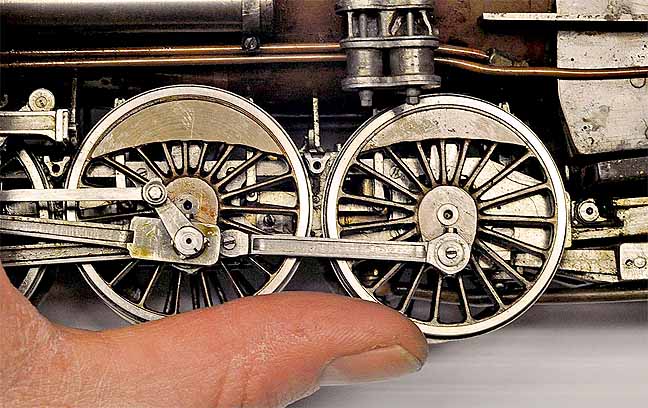

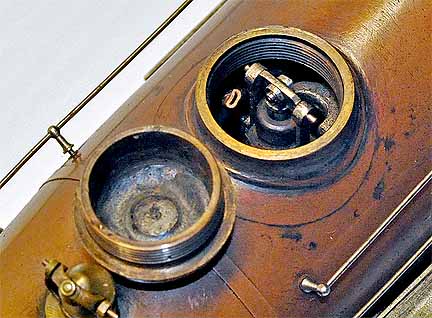

Left: Looking down on the smokebox, the level of detail is apparent. Although the engine was nearly all scratchbuilt, certain parts, like the headlight casting and couplers, were purchased.
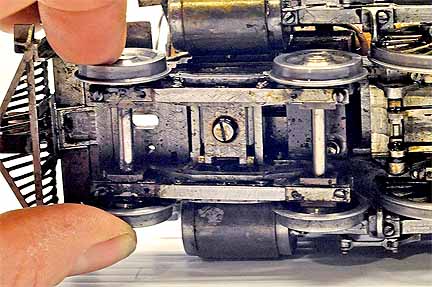
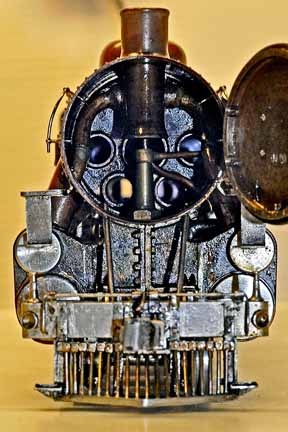
Right: With the smokebox door open, the four small flues and one large flue are visible, along with the blast and petticoat pipes and piping to the cylinders.


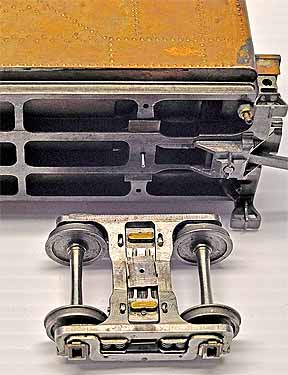
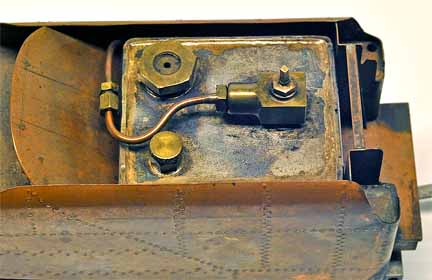
Left: The tender bottom with one truck removed.
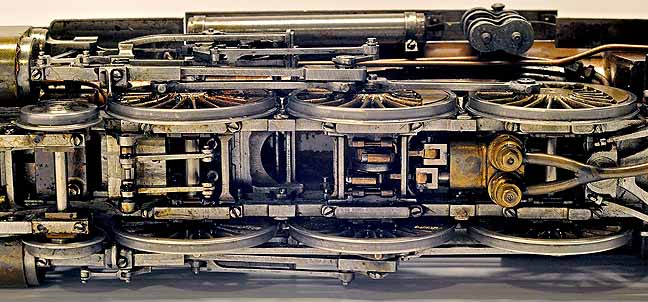
Back to Sidestreet Bannerworks
Click here to find out how your engine can be featured!
This page and its contents
Copyright Sidestreet Bannerworks, 2012